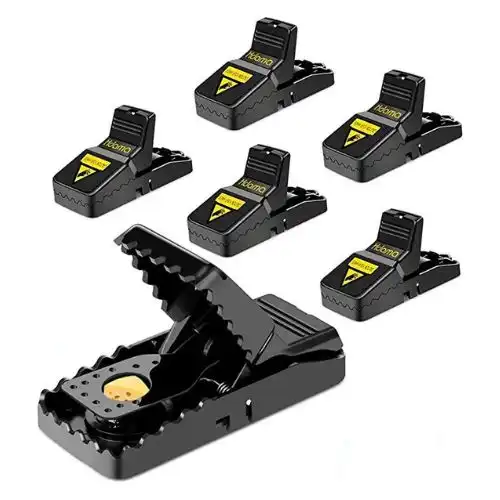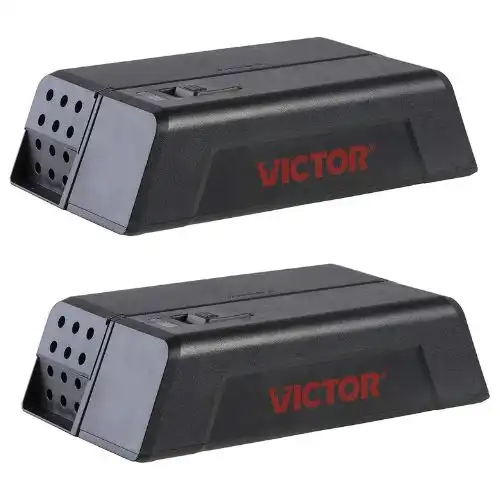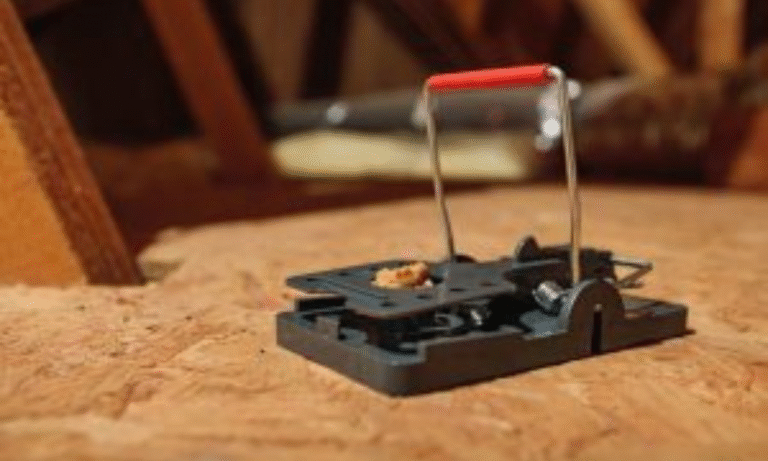Estimated reading time: 4 minutes
There are several different types of mouse traps. The most common type is the snap trap. This trap consists of a wooden base with a metal bar that snaps down on the mouse when it steps on a trigger plate. Another common type of trap is the glue trap. This trap consists of a cardboard base with a sticky surface that traps the mouse when it steps on it. There are also electronic traps that kill the mouse with an electric shock.
Types of Mouse Traps

Snap traps
A snap trap is a device that is used to capture or kill mice. It is typically made of wood or plastic and has a metal spring that is activated when the mouse steps on it. The trap then snaps shut, either killing the mouse or holding it captive.
Snap traps are one of the most common types of mouse traps, and they are relatively simple to use. Just bait the trap with some food and set it where you think the mouse will travel. Once the mouse steps on the trigger, the trap will snap shut, hopefully catching the mouse inside.
If you have a problem with mice in your home, setting out a few snap traps can be an effective way to get rid of them. Be sure to check the traps regularly and dispose of any mice that have been caught.
Glue traps

A glue trap, also known as a sticky trap, is a type of mouse trap that uses an adhesive substance to capture mice. Glue traps are often made of cardboard or plastic and are coated with a strong adhesive. When a mouse steps onto the trap, the adhesive holds the mouse in place until it dies of starvation or dehydration. Glue traps are considered inhumane because they cause suffering to the mice who are caught in them.
Electronic traps

An electronic mouse trap is a trap that uses an electric shock to kill mice. The trap has a metal plate that the mouse steps on, which completes a circuit and delivers a lethal dose of electricity. The traps are designed to be tamper-resistant so that children and pets cannot be harmed by them.
Electronic traps are considered to be more humane than traditional snap traps because they kill the mouse instantly. They are also more effective since there is no need to bait the trap or reset it after each catch. However, electronic traps are more expensive than traditional traps, and they require batteries to operate.
Live traps

A live trap is a device used to capture animals without harming them. These traps are typically used to capture rodents like mice, rats, and squirrels. Live traps are often baited with food to lure the animal inside. Once the animal is inside, the door will close behind them and they will be unable to escape.
Live traps are a humane way to control rodent populations. They can be used over and over again, making them a more sustainable option than traditional mouse traps. If you have a rodent problem in your home or business, consider using a live trap to solve it.
Which trap is best?
There is no best trap, as each has its own advantages and disadvantages. For example, live traps are effective but require regular checking, while kill traps are more permanent but may be inhumane. Ultimately, it depends on your specific needs and preferences.
How to set a mouse trap
If you’re tired of finding mouse droppings in your home, it might be time to set a mouse trap. While mice are cute, they can cause serious damage to your home and property. Here’s a step-by-step guide on how to set a mouse trap so you can get rid of these unwanted guests for good.
- Choose the right type of mouse trap. There are many different types of mouse traps available on the market, so it’s important to choose one that will be effective for your specific needs. Snap traps are one of the most popular and effective options.
- Place the mouse trap in an area where mice are active. Mice typically like to stay close to walls and corners, so these are ideal locations to place your trap.
- Bait the trap with something that will attract mice.
Final Verdict
In conclusion, there are four different types of mouse traps available on the market. Each type has its own advantages and disadvantages. It is important to choose the right type of mouse trap for your particular needs.


